Volume 37, Issue 3
Displaying 1-12 of 12 articles from this issue
- |<
- <
- 1
- >
- >|
Editorial
-
2020Volume 37Issue 3 Pages 741-742
Published: January 31, 2020
Released on J-STAGE: January 30, 2020
Download PDF (163K)
Original Articles
-
2020Volume 37Issue 3 Pages 743-754
Published: January 31, 2020
Released on J-STAGE: January 30, 2020
Download PDF (1416K) -
2020Volume 37Issue 3 Pages 755-765
Published: January 31, 2020
Released on J-STAGE: January 30, 2020
Download PDF (374K) -
2020Volume 37Issue 3 Pages 766-778
Published: January 31, 2020
Released on J-STAGE: January 30, 2020
Download PDF (1438K) -
2020Volume 37Issue 3 Pages 779-787
Published: January 31, 2020
Released on J-STAGE: January 30, 2020
Download PDF (558K) -
2020Volume 37Issue 3 Pages 788-794
Published: January 31, 2020
Released on J-STAGE: January 30, 2020
Download PDF (392K) -
2020Volume 37Issue 3 Pages 795-802
Published: January 31, 2020
Released on J-STAGE: January 30, 2020
Download PDF (903K) -
2020Volume 37Issue 3 Pages 803-809
Published: January 31, 2020
Released on J-STAGE: January 30, 2020
Download PDF (280K) -
2020Volume 37Issue 3 Pages 810-818
Published: January 31, 2020
Released on J-STAGE: January 30, 2020
Download PDF (326K) -
Study of Risk Factors of Renal Lithiasis in Epileptic Patients on the Anti-epileptic Drug Zonisamide2020Volume 37Issue 3 Pages 819-825
Published: January 31, 2020
Released on J-STAGE: January 30, 2020
Download PDF (248K)
Feature Articles
-
2020Volume 37Issue 3 Pages 826-827
Published: January 31, 2020
Released on J-STAGE: January 30, 2020
Download PDF (163K) -
2020Volume 37Issue 3 Pages 828-836
Published: January 31, 2020
Released on J-STAGE: January 30, 2020
Download PDF (612K)
- |<
- <
- 1
- >
- >|
